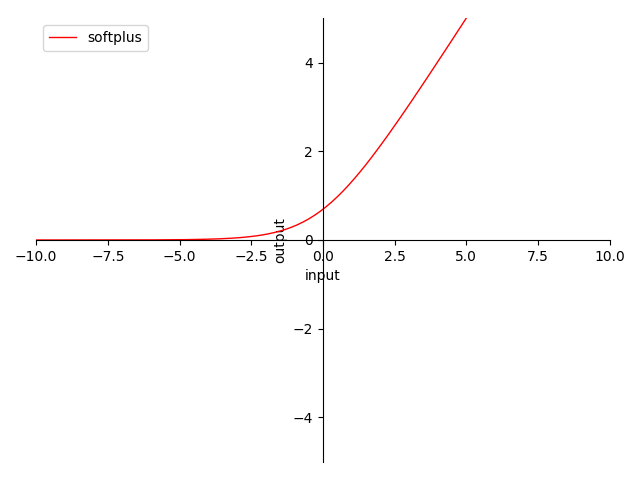4.3.3 Softplus
迭代公式:
图像:

图 4-11 Softplus 函数图
特性:
- 非 0 为中心(non-zero-centered)
- 输出范围在 之间,导数正好为 Sigmoid
- 输出 ,反向传播(BP)权值正向堆积(梯度始终 )
- 当输入在 时,梯度趋近常量 ,极大避免梯度消失问题 及 梯度爆炸问题
- 当输入在 时,输出近乎无变化,逐层梯度趋 ,更易导致梯度消失
- 指数计算,较为消耗资源
Softplus 可以看作是 ReLU 的平滑版,即无穷阶连续可导。但是因为采用了指数运算,且特性在计算机处理可近似相同。因此,常常使用 ReLU 而不是 Softplus。并且实验验证,Softplus 也并不优于 ReLU。
Softplus 算子化
利用 C 语言实现对算子的封装,有:
#include <stdio.h>
#include <math.h>
double softplus(double x) {
return log(1 + exp(x));
}
int main() {
double x = 0.5;
double y = softplus(x);
printf("The softplus of %f is %f\n", x, y);
return 0;
}
运行验证可得到结果:
The softplus of 0.500000 is 0.648721